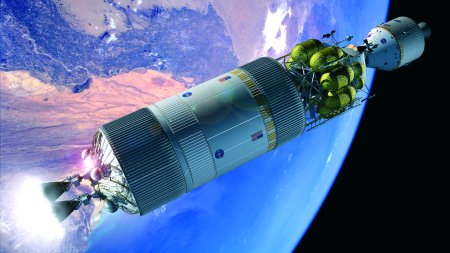Agency looks back to success of 1960s spacecraft to drive forward future project
The first NASA expedition to the Moon after a 46-year hiatus is intended to be strikingly similar to the previous Apollo programme’s approach on spacecraft design, overall architecture and the limits of its initial objectives.

The $104 billion, 13-year plan unveiled by NASA fulfils President George Bush’s 18-month-old promise to refocus the agency on human spaceflight beyond low-Earth orbit, but downplays Bush’s original objective to establish a permanent lunar base as a stepping stone for a manned voyage to Mars.
Meanwhile, funding shortfalls for the Space Shuttle, International Space Station and Hubble Space Telescope will test NASA’s ability to implement the lunar plan on schedule, with even supporters in Congress questioning the financial feasibility of the plan within the agency’s budget forecast.
The lunar exploration plan is expected to cost $24 billion over the next five years. Another $80 billion is projected to be spent over the last eight years combined, with at least $15 billion needed in fiscal 2018. House of Representatives science committee chairman Sherwood Boehlert, a Republican, says there is “simply no credible way” to finance the expedition unless NASA asks Congress for more money, which the Bush administration has repeatedly refused to do. “Whether such an increase is a good idea in the context of overall federal spending at this time is something neither Congress nor the administration has yet determined,” Boehlert adds in a written statement.
After he outlined the exploration plan to reporters, NASA administrator Michael Griffin was asked about plans for a potential Mars mission. He replied: “We’ve not got out that far in our planning.” Griffin also made clear that Bush’s call in January 2004 to establish an “extended human presence on the Moon” is an option, not a mandate. NASA’s initial goals for lunar travel are focused on recreating the Apollo-like sortie capability. A commitment to build a lunar base has not been made, but the current plan makes allowances for it, says Griffin.
The new plan’s many likenesses to the Apollo programme’s blueprint was not only acknowledged but embraced by NASA. “Much of it looks the same [as Apollo], but that’s because the physics of atmospheric entry haven’t changed recently,” says Griffin.
STEPHEN TRIMBLE/WASHINGTON DC
Agency clarifies CEV needs The release of the lunar plan, entitled the Exploration Systems Architecture Study (ESAS), helps to clarify publicly NASA’s design requirements for the Crew Exploration Vehicle (CEV), which is entering the final phase of a competition. A Northrop Grumman/Boeing team is competing against a Lockheed Martin/EADS bid for the award. Both contractor teams say that NASA’s proposed lunar architecture offers a low-risk technical approach. Any programme delays are more likely to be caused by funding problems rather than design or technology development issues. NASA apparently was mindful of reducing its exposure to technical risk, with the specification of an Apollo-like blunt-body CEV capsule cited as an example. |
Source: Flight International























